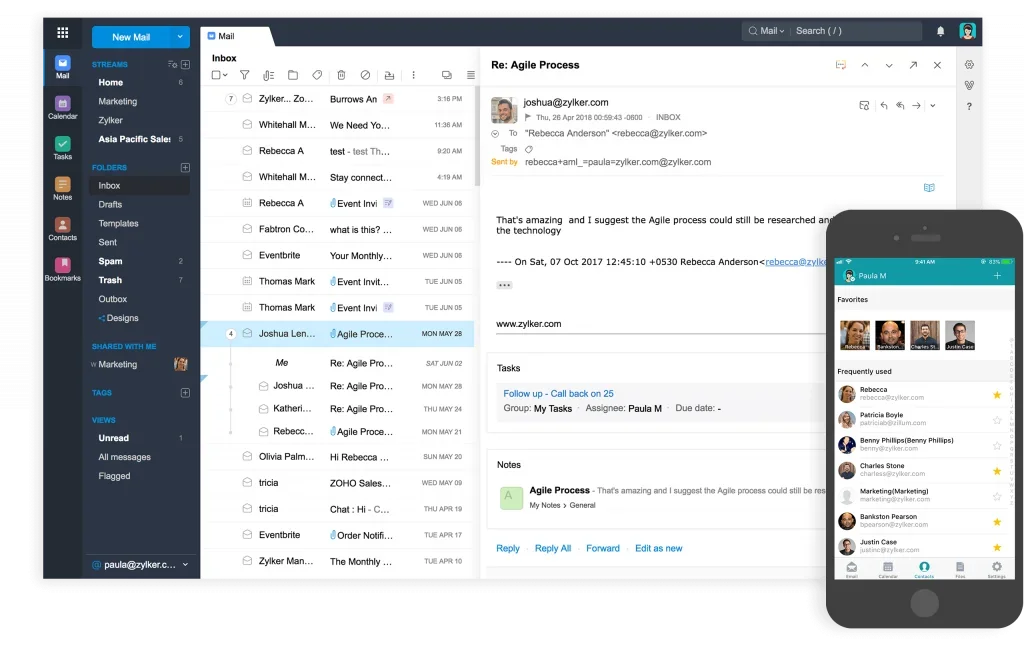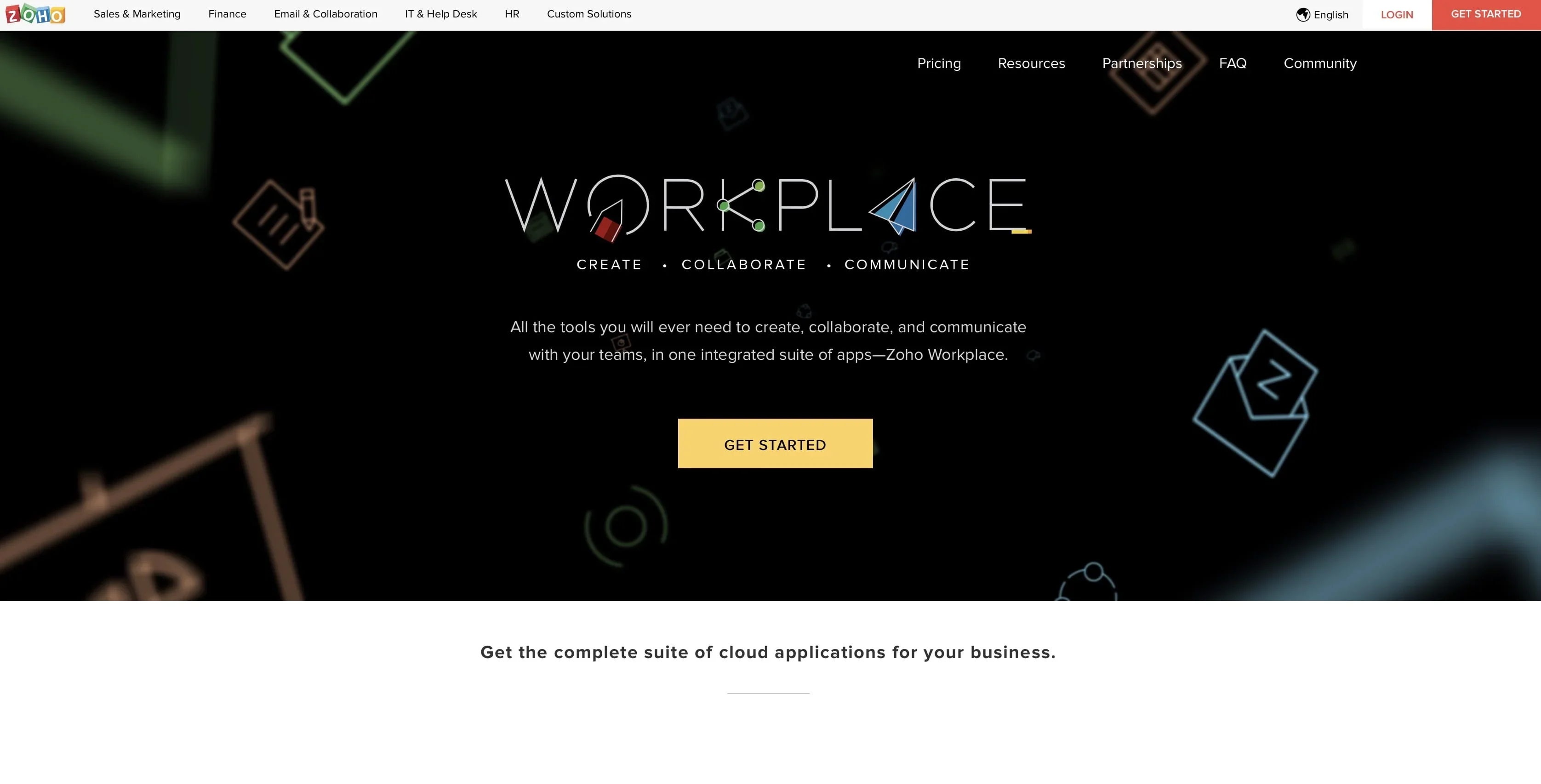We all know that Google is the dominating force of innovation when it comes to the productivity suite industry and they have been offering nothing but excellent solutions as an alternative to Microsoft’s Office 365.
In our opinion, there's one last productivity suite that is still a true contestant to Google's G Suite—Zoho Workplace.
While it offers a very similar email platform, Zoho aims to provide a perfect package of services for startups and small business. Let’s compare the two.
Office Suite
Both Zoho and Google offer a wide range of internet-based software that has more or less similar features within the workplace itself. Zoho’s recently launched productivity suite, Zoho Workplace, consists of nine applications that present rival worthy of Google Suite. The nine apps are:
- Connect, a collaboration tool with posting and commenting within your team
- Cliq, a messaging tool with file sharing and quick previews
- Mail, an email client that looks and acts like a social media platform
- Meeting, an in-browser web conferencing tool
- Showtime, a mobile presentation tool that allows audience participation
- Docs, a platform to save and share you work with colleagues
- Show, a presentation creation tool
- Sheet, a spreadsheet tool
- Writer, a collaborative word processor
Zoho also has a very useful tool called Flow which integrates cloud-based applications into the email interface such as Slack or Linkedin. This is extremely useful and beneficial to businesses that take advantage of social media promotion because it allows businesses to update Facebook or Twitter feeds without the need to leave their email application.
Zoho also offers an intuitive process builder called Flow that automates tasks across different applications, allowing the user to drop and drag tasks directly into the flow. The users can make their own pre-built flows to automate repetitive tasks which are time-consuming but necessary to your process.
Collaboration Tools
Cliq is an example of one of Zoho’s many powerful collaboration tools. Cliq goes way beyond a simple team messaging platform and includes video and audio calls that were built for business purposes as well as file sharing and messaging in real time.

Just like Slack easily create different groups and channels to improve and speed up their communication. In case they need particular keywords or files, there's an enhanced search engine that allows an advanced search mode. Very effective and practical.
On the other hand, G-Suite offers a similar solution in the form of Google Hangouts, the application where you can video or phone chat, create groups, and send messages. According to Google, they plan on adding voice command capabilities to increase the efficiency of their applications. By saying a simple voice command, you'll be able to initiate a conference. The G Suite is a bit pricey and the basic package starts at $5 per user per month which also includes 30GB of cloud storage, 24/7 support via email and phone, free Google Slides templates, spreadsheets, Docs, shared calendars, and other cool features.
Email Client
Many businesses use Gmail as their go-to email client regardless of their size, although we have a favorite of our own for startups 😉. Gmail has certainly become the gold standard for both large enterprises and startups. Still, you'd be surprised how tough it is to make a call between Zoho Mail and Gmail. While similar, there are different price points and features, making it very hard to decide which offers the best in terms of value. It all actually depends on your specific business needs.
While Gmail is well-established, Zoho is also worth a try since they're stepping up their game when it comes to the online office suite and webmail. For example, Zoho Mail offers more affordable prices including a starter pack for startups with under 5 members absolutely free of charge, which makes it perfect for a growing company.

On the other hand you have the Gmail platform that offers shared calendars, voice and video conferencing software, and business emails. Google's productivity suite is top notch as it also provides a good amount of cloud storage and admin controls, a very useful feature for managing employee data.
On top of all that, Gmail also offers AI driven features such as Smart Compose and Smart Reply that analyze received content and email behavior in order to suggest the best replies, although to be honest I almost never take advantage of these features. With that in mind, some teams are turning to Gmail alternatives like Typewire that prioritize privacy over AI-driven features - offering Canadian-hosted business email with custom domains and the core tools that startups actually need, without analyzing your message content.
Overall, Zoho Mail is great if you have less than 5 users (because it's free!), and is generally cheaper per user if you decide to go on one of their paid plans. Feature-wise, Gmail has a couple A-list features but we find ourselves mostly sticking to the core features anyway. If you're like us, Zoho Mail can be a cheaper alternative that still meets all your email client needs.
Pricing
The Standard Zoho Workplace Package costs $2 per user per month and it includes 30GB of storage across Zoho Docs and Zoho Mail as well as a 30MB attachment limit with additional multiple domain hosting.
The G Suite is a bit pricey and the basic package starts at $5 per user per month which also includes 30GB of cloud storage, 24/7 support via email and phone, presentations, spreadsheets, Docs, shared calendars, and other cool features.
Conclusion
Although both Zoho and Google offer similar capabilities from a purely emai-focused standpoint, Google offers better third-party app integrations while Zoho offers more integration with social media like Facebook and Twitter.
Zoho is a bit cheaper and to us, is a better solution for startups. Perhaps we don't take advantage of all the bells and whistles offered by G Suite, in which case, let us know what we're missing out on and what you think about the new Zoho Workplace!

